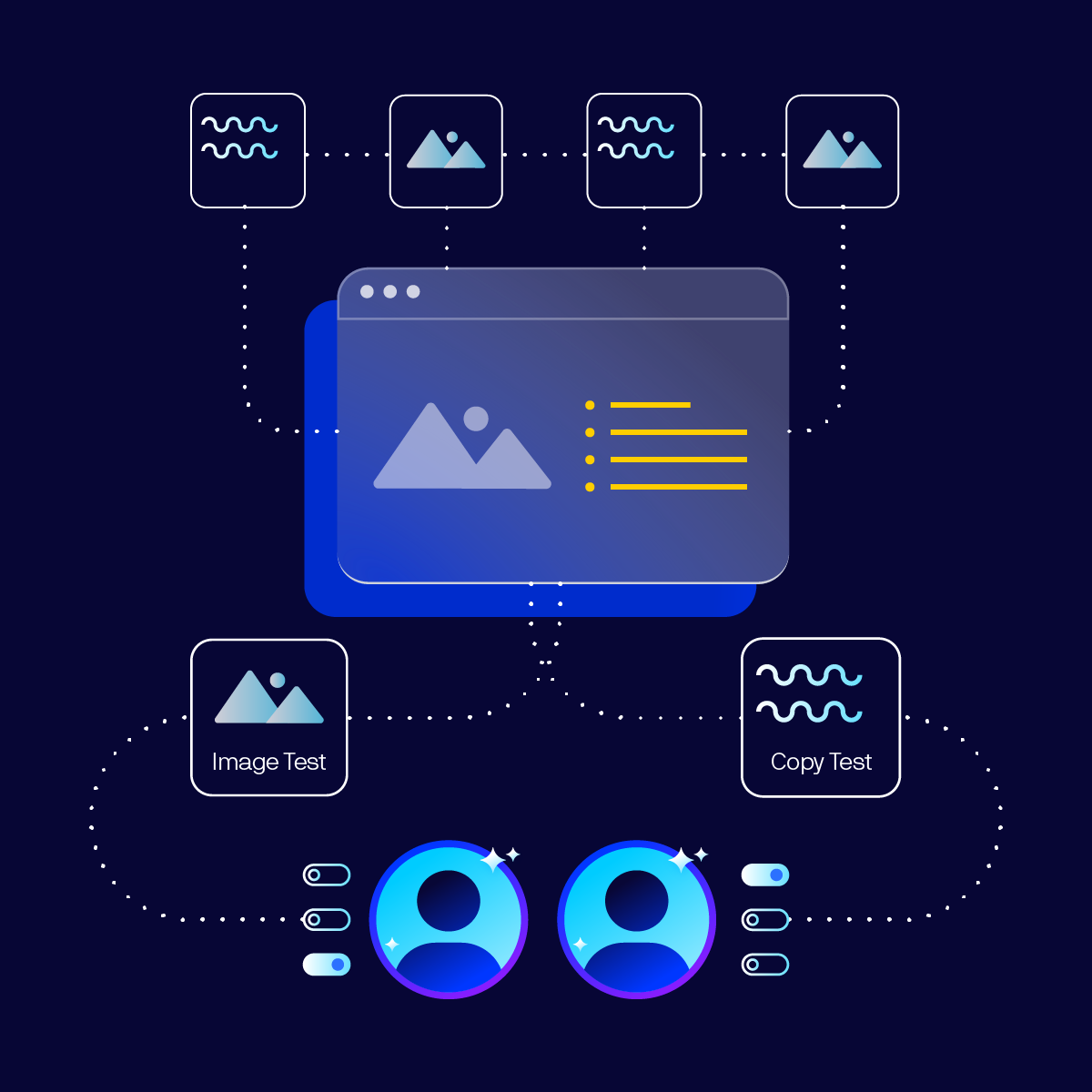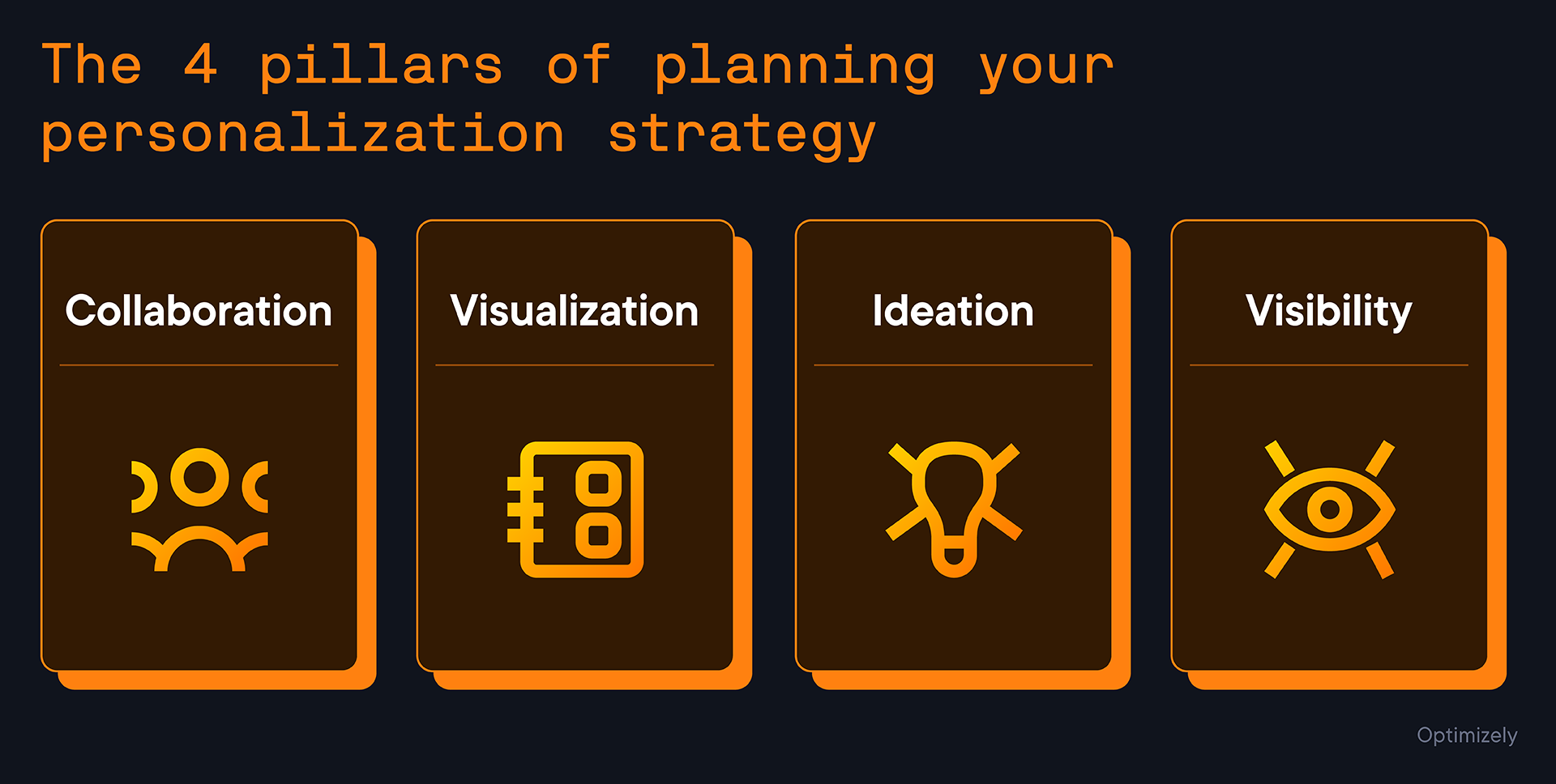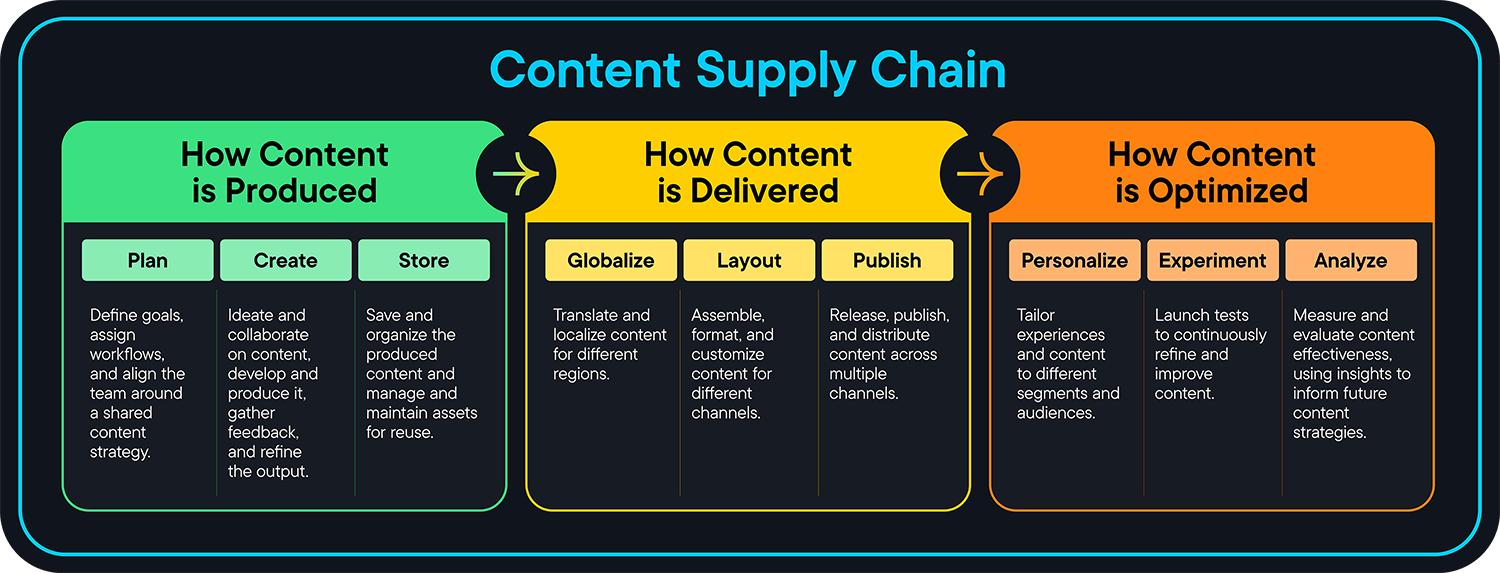When we think about personalization strategy, we generally think about how to improve the customer experience by tailoring websites and apps to specific needs.
But what’s worrying marketers, like, really worrying marketers is the relationship between personalization and content – specifically, how to scale content creation to maximize returns on personalization efforts.
Look, we can throw enough corporate jargon at you to fill an Equinox swimming pool. The bottom line is that the more content you have at your disposal, the better the chances of surfacing relevant content. ![]()
Scaling content creation is easier than you think. With the right content marketing platform, you can facilitate workflows that drastically reduce the amount of time it takes to create content, easily collaborate on ideation and strategy, publish with ease, and even leverage AI for content creation and personalization.
What is the relationship between content and personalization?
Personalization is where content meets data.

As you collect data from your customers and learn more about them, you’ll be able to better ascertain what they want to consume and at what point.
Some examples include:
- For ecommerce brands, this can be as simple as product recommendations based on real-time behaviors and historical purchasing data.
- For travel companies, banks, automotive, or any consumer goods brands, content can extend beyond consumable assets into customized pages with tailored deals, vouchers, sales, plans, and various engagements.
- Customers who frequent your case studies and customer stories pages are likely closer to the purchasing stage. This is where you want to optimize the web experience to steer them towards getting in contact with your team.
- Users who are reading blog posts should be guided towards longer form or more expansive content like longer-form videos or white papers since they’re in more of an exploratory or discovery phase.
Once you’ve used data to deliver content, you can then analyze how your customers are consuming and interacting with that content to then gather even more data.
See how that works?
If you’re nodding your head and saying “Yea! We need data about our users to make sure they’re getting the right content at the right time, while at the same time, we’re looking at what they’re doing once they get that content to build out their customer profile even more so we can learn more about them and keep the cycle going,” then you get it!
Easy enough, right?
Well, not so fast.
You’re probably also saying to yourself “wait, that’s easy enough if I have a tool to manage our content, and a customer data platform, and a personalization tool, and a tool for experimentation, and a tool that writes content for me, and a tool that turns my laptop into a french press, and a tool that...”
But what if you don’t have all of that? At a bare minimum, you’re going to need a content marketing platform (CMP), a content management system (CMS), a customer data platform (CDP), an experimentation platform, a personalization platform, and several other dependent tools to make them all run smoothly.
[obligatory soft sell] At this point, you probably already know that we’re going to bring up our Optimizely One solution that packages all these features together into one marketing operation system. [/obligatory soft sell]
Not interested in Optimizely One just yet? That’s totally cool. You do you. (No, seriously, totally cool!)
Here’s how you can scale content creation with what you likely already have in place.
Content delivers hyper-personalized experiences
Hyper-personalization when it comes to content means one of two things:
- You’ll need a massive library of content covering a wide of subject areas
- You have an extremely narrow, specific customer base
Either way, you’ll need to have a deep understanding of what your customers want to see, when they want to see it, and what you want them to do when they see it.
So, that brings us to step 1...
Data
Do you need data to scale content? Not necessarily. If you have an ultra-focused customer base and you’ve done your homework on your personas, you can absolutely scale content.
But having a solidified data infrastructure will supercharge (corporate jargon alert!) your content creation strategy in real-time and in ways you might not even realize.
One of the most efficient ways of ensuring you have data-driven content is to incorporate a customer data platform (CDP).
For companies that are digitally mature (or aspiring to become digitally mature), a CDP is an indispensable component of your martech stack.
With so much data being collected at various touchpoints on and offsite, it’s important to be able to harness all of it as efficiently as possible.
And while you might be thinking that sounds about as easy as untangling your messy bin of extra wires/cables you’ve been saving forever “just in case”, the truth is that a powerful CDP will make that a reality.
CDPs will allow you to:
- Unify your data
- Understand customer behavior
- Facilitate integrations and cross-channel activation
- Predict customer interactions
- Boost customer lifetime value (CLV)
Content marketing platforms (CMP)
For anyone creating content of any shape or size, you know how much of a pain in the peach it can be to keep track of everything; notifications go missed, WiFi is crappy, strategies pivot, no one knows where anything is stored, someone already wrote that article 3 years ago, too many cooks in the kitchen, it was bring your dog to work day, etc.
Bringing people together at any capacity is always going to be a challenge and content creation is no exception. So, before you do anything, you’ll need to agree on a shared workspace that allows for cross-functional planning, collaboration, execution, and measuring.
When pulling together your content marketing planning solution, consider the 4 pillars of planning your personalization strategy in order to maximize workflow efficiency:

- Collaboration – Scaling content creation, especially with the ultimate goal of delivering personalized experiences to your customers requires a centralized solution for collaboration.
- Visualization – Marketers have a much different way of visualizing workflows than engineers and product managers. Ensure you allow flexibility in the way team members can keep track of what they’re doing that’s more native to their own inherent workflows.
- Ideation – Constant iteration, feedback, and experimentation are must-haves for any content strategy. As you gather data, your personalization strategy will also change, so a unified workspace to constantly iterate is crucial.
- Visibility – Storing assets, accessing comments and threads, and feedback channels aren’t just important for your internal team, but any stakeholders with a vested interest in the go-to-market (GTM) strategy.
Scaling content creation
Content teams have several barriers to break through when it comes to scaling content creation:
- What to create and who are we creating it for?
- Do we have enough resources?
- How do we know this is what we should create?
- How do we ensure we can repeat this process over and over again?
Let’s address these questions one by one;
What to create and who to create it for
What you create and who you create it for is almost entirely dependent on your customer lifecycle and what your goals are.
Are you trying to build awareness for a new product or are you trying to upsell existing customers on new features?
If you’re trying to build awareness, you might want to focus on easily digestible, visually engaging content like landing pages, short-form video, and SEO-driven blog content.
If you’re trying to upsell current customers or capture those who are near the latter stages of the buyer cycle, you may want to focus on longer-form content like white papers, webinars, nurture campaigns, and gated content.
Start by identifying weaknesses in your customer lifecycle and start targeting those areas with the right type of content. Adopting a data-driven approach with an effective CDP along with an experimentation platform will allow you to test inflection points that either keep users on site or drive them away.

Do we have enough resources?
Probably not.
But seriously, you’re probably already used to getting as possible with as little as possible. But that doesn’t mean everything is off the table.
If you don’t have a stable of content writers to create informative written assets, leverage AI to do the heavy lifting for you. Remember when content marketers thought AI was going to take their jobs? Turns out, nothing could’ve been further from the truth. Content marketers who aren’t using AI are falling behind those that do.
If you don’t have a massive video budget, consider doing screenshares, product demos, or even interviews that are low-production value but still offer tons of insights.
What’s important to remember is that tons of resources are wasted due to bad planning and complicated workflows create bottlenecks.
Like most technology, it’s not about what you use, but how you use it.
How do we know this is what we should create?
That’s a great question and it’s the reason why having connected tools and workflows is so important.
If your personalization engine is running on all cylinders and you’re constantly experimenting, you’ll be able to rely on a data-driven approach to inform your strategy.
There’s no reason to rely on intuition and guesswork in 2024. Customers interacting with your site or app are going to leave a detailed enough trail where you can all but ascertain what’s working and what isn’t.
Analyze what’s being delivered to your customers through your personalization efforts. Are you finding that most of the same pieces of content are being surfaced over and over again? Maybe it’s time to branch out and create companion pieces to increase content diversity.
How do we ensure we can repeat this process over and over again?
Once again, workflows and planning.
Starting to notice a theme here...
Where most marketers get tripped up in scaling content is they overfocus on the creation aspect and not enough on the workflows.
What slows down marketing teams more than anything isn’t a lack of creators, or a lack of resources, or a lack of desire... it’s a lack of planning, testing, and iteration.
Anyone can prompt ChatGPT to write 1,000 articles in the blink of an eye. Anyone can throw enough money at an agency to deliver visual assets in bulk.
Conclusion
Personalization is the future of marketing and we’re living in an age of heightened expectations for unique, 1:1 experiences. In order to deliver on those experiences, a comprehensive library of content is critically necessary.
Marketers are growing more concerned about how to build out that much content. They’re still weary of a reliance on AI and the potential ramifications of impersonal, bland content, but also understand how resource intensive it is to operate without it.
What we’re saying? You can use AI in tandem with your human-powered content strategy.
And when you combine that with nailed on workflows, exquisite planning, and the right set of tools are working harmoniously with one another, scaling becomes less of a lift.
- Last modified: 6/25/2025 8:16:28 PM
